-
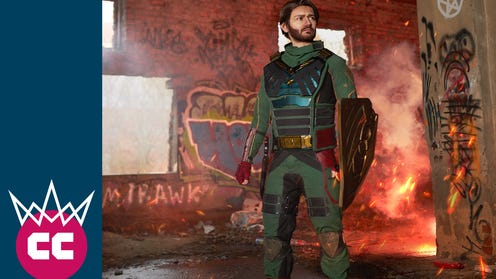
Meet Rav, one of the 2024 Cosplay Central Crown Championships finalists
After triumphing at Magnificon, the winner of the Polish qualifier is heading to Chicago to take on the world in the Cosplay Central Crown Championships
-
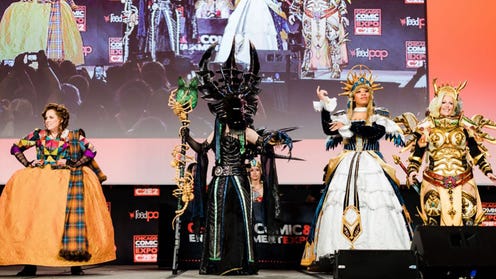
And the finalists for 2024 Cosplay Central Crown Championships' Global Finals are...
Meet the global finalists for the 2024 Cosplay Central Crown Championships before they have a showdown at Chicago's C2E2 2024
-
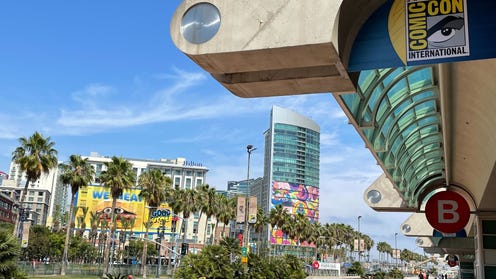
Comic conventions: a comprehensive guide of all of the upcoming major comic cons
There are comic conventions happening weekly around the world - here's a list of many of them, so you can make plans to be there yourself!
-
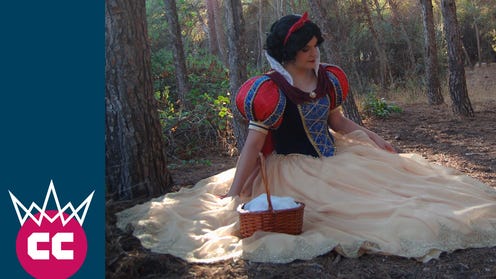
Meet Hermione, one of the 2024 Cosplay Central Crown Championships finalists
After triumphing at Japan Weekend Madrid, the winner of the Spanish qualifier is heading to Chicago to take on the world in the Cosplay Central Crown Championships
-
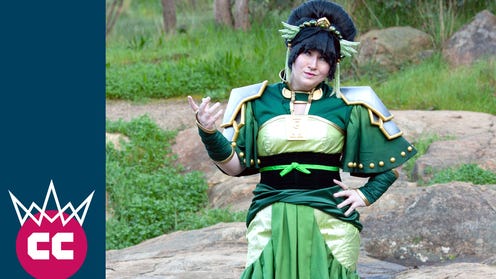
Meet Kirilee Cosplay, one of the 2024 Cosplay Central Crown Championships finalists
After triumphing at PAX Aus, the winner of the Aussie qualifier is heading to Chicago to take on the world in the Cosplay Central Crown Championships
-
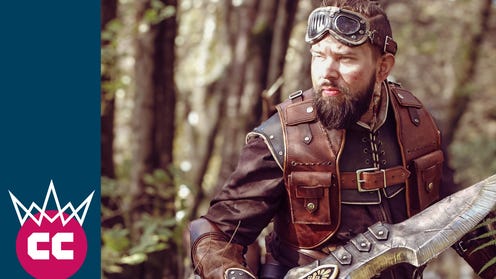
Meet Matthew, one of the 2024 Cosplay Central Crown Championships finalists
After triumphing at MCM Birmingham Comic Con, the winner of the UK qualifier is heading to Chicago to take on the world in the Cosplay Central Crown Championships
-

Cosplayers give it their all at MCM Birmingham's Cosplay Karaoke!
Sure, you've *seen* your favorite Disney princess at Comic Con. But have you *heard* her?
-
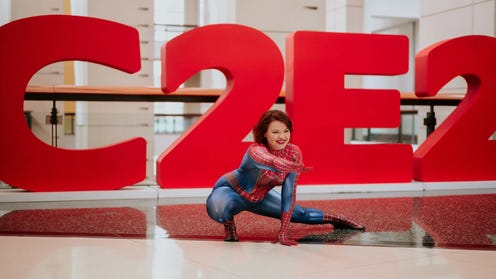
Watch now! Livestream the Cosplay Central Costume Showcase live from C2E2 2024!
See the best outfits in Chicago strut their stuff live on the Main Stage!
-
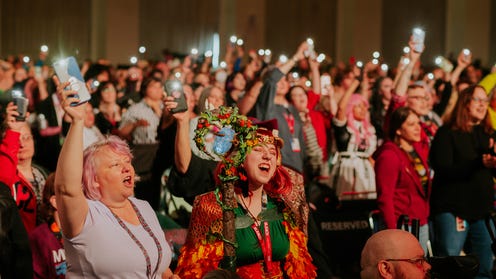
Livestream Josh Brolin, One Piece, Brandon Sanderson, & more C2E2 2024 panels live from Chicago!
The 13 biggest panels of Chicago's C2E2 2024 will be able to be watched live from anywhere, straight into your home or phone.
-
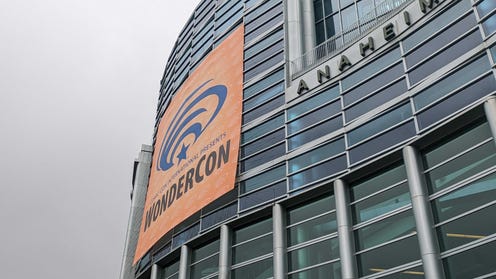
Comics legends, friendly staff, and tons of cosplay
-
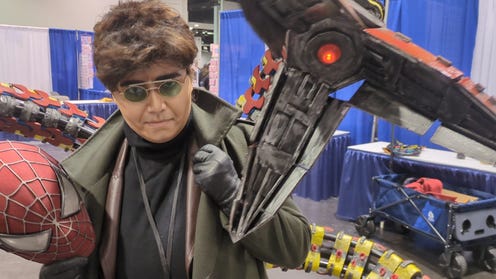
WonderCon 2024: The coolest cosplay of the show
Watch our cosplay roundup video to see the coolest cosplay at WonderCon 2024
-
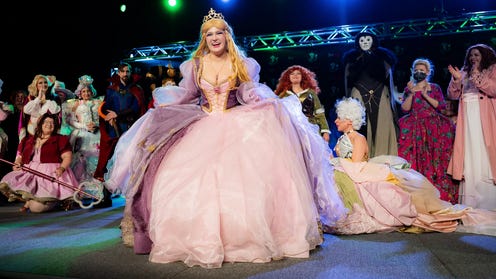
The best cosplayers from the USA and the world gather on a single stage at this year's Chicago Comic & Entertainment Expo - watch it here!
-
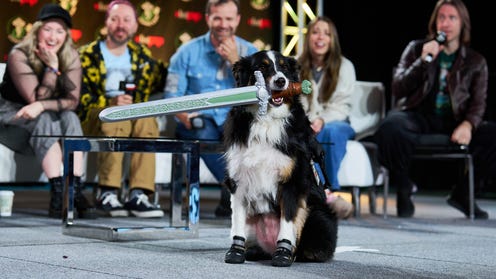
Watch nine panels from the ECCC 2024 Main Stage powered by Xfinity.
-
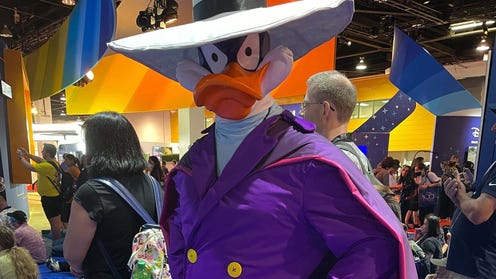
Disney's D23 Expo tickets are on sale now!
After 140k people attended 2022's D23 Expo by Disney, the next question is simple: how can we do it again?
-
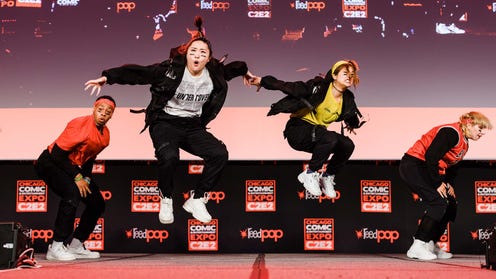
How to watch panels from Chicago's C2E2 (and other ReedPop shows) from anywhere
Stream the big panels from New York Comic Con, Emerald City Comic Con, C2E2, MCM Comic Con, and more
-
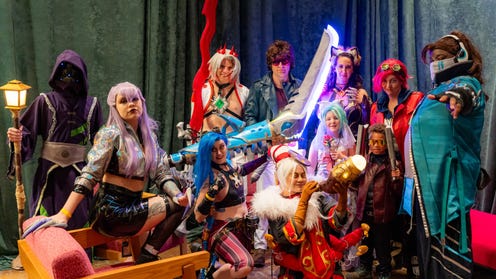
Cosplaying for Comic Con this year? Here are the best online cosplay stores
If you're looking to buy your own cosplay costumes, here's some sites to choose from.
-
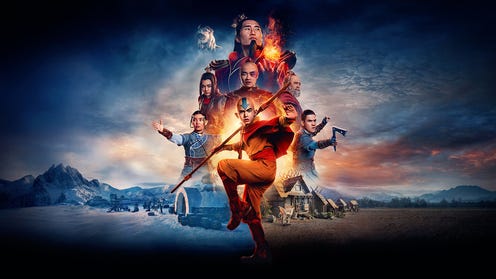
What do Avatar: The Last Airbender cosplayers think of the new Netflix show?
Reviews and reactions from the floor of Emerald City Comic Con
-
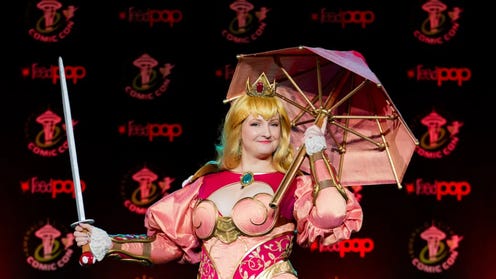
The annual competition's latest match-up was at Emerald City Comic Con in Seattle, and Popverse got them all on film
-
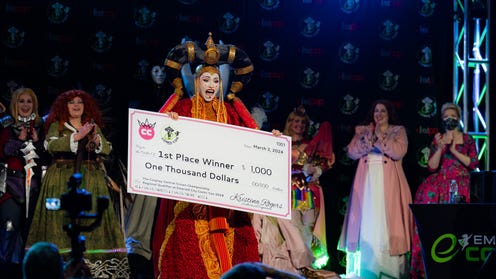
Celebrate the winners of the Cosplay Central Crown Championships at Seattle's ECCC 2024!
Gaze upon the victors of ECCC 2024's Cosplay Central Crown Championships
-
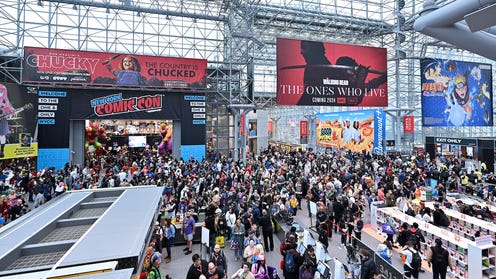
Popverse is coming to 16 (and possibly more!) conventions in 2024 - where will we see you at?
The Popverse team is going on a road trip in 2024! (Well... lots of road trips, really)
-
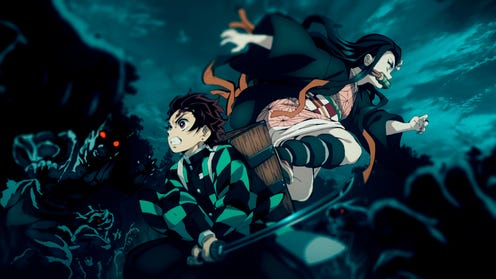
Demon Slayer: Tanjiro & Nezuko cosplay tips for bringing the hit anime to life
Want to cosplay alongside another Demon Slayer fan? We've got the perfect pair of outfits for you.
-
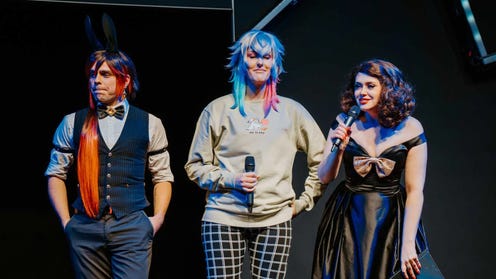
Watch MCM Birmingham's Saturday night Cosplay Showcase here!
Your favorite characters come to life in Birmingham for the second night of cosplay carousal
-
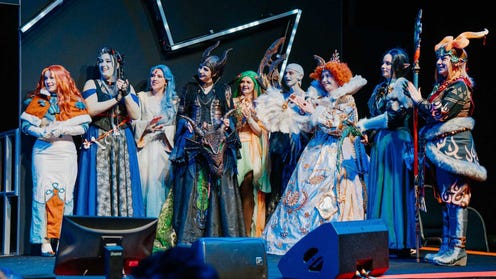
Stream the MCM Birmingham 2023 Variety Show and Cosplay Masquerade from anywhere in the world
Couldn't make it to MCM Birmingham? Don't worry, you can watch the con's biggest party right here
-
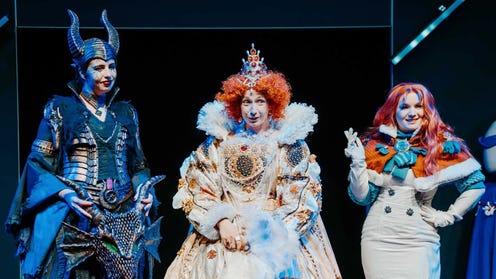
Watch MCM Birmingham 2023's Cosplay Showcase!
Talented artists from across the UK strut their stuff at the first night of Birmingham's pop culture blowout
-
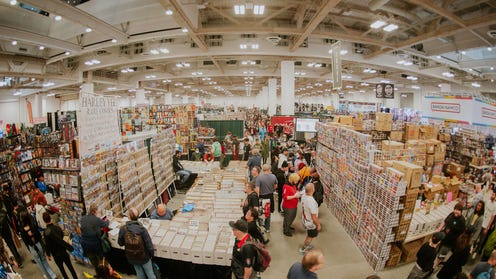
Seattle's ECCC 2024 welcomes Penguin Random House, Oni Press, Clarion West, and more
The full list of exhibitors at the 2024 Emerald City Comic Con in Seattle has been revealed.
-
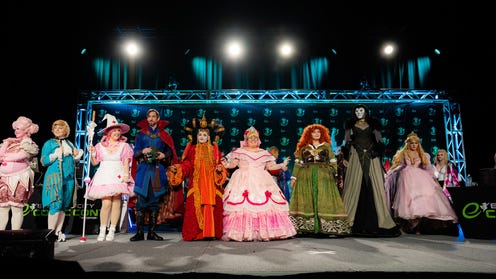
Watch the Cosplay Central Crown Championship regional qualifier from Seattle's ECCC
Cosplay Cental's annual competition continued at Emerald City Comic Con 2024 - check out the artists by watching the event here!
-
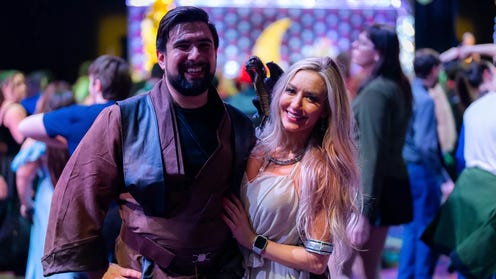
Emerald City Comic Con 2024's best cosplayers, from Spider-Men to Hazbin Hotel and more
The best dressed at Seattle's Emerald City Comic Con 2024.
-
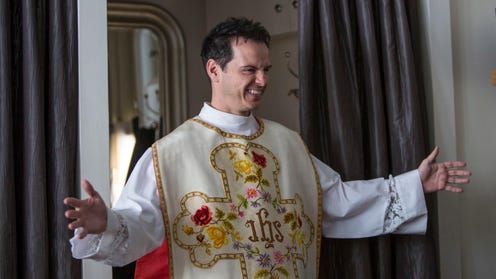
Andrew Scott discusses the magic of cosplay and how it's similar to acting
“It’s a uniquely human thing to want to dress up in someone else’s clothes,” Andrew Scott says
-
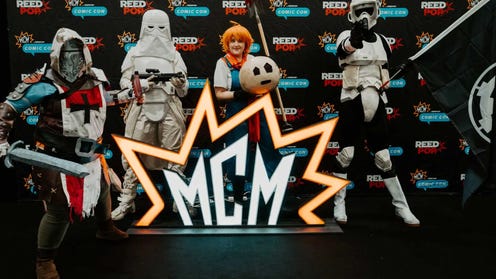
Members Access Watch MCM's amateur cosplayers take the stage for a Cosplay Showcase
They're cosplayers of any age and skill level, and you can watch them strut their stuff from London's 2023 Comic Con
-
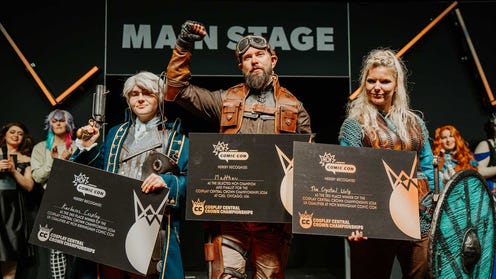
UK's best cosplayer crowned in Cosplay Central Crown Championships at MCM Birmingham
Meet the first, second, and third place winners of MCM Birmingham's UK Qualifiers for the Cosplay Central Crown Championships
-
.jpg?width=496&height=279&fit=crop&quality=80&format=jpg&auto=webp)
Hack/Slash's new writer/artist Zoe Thorogood is coming to a con dressed as her character Cassie Hack
Zoe Thorogood is one of the world's best comic creators -- and now cosplayers
-
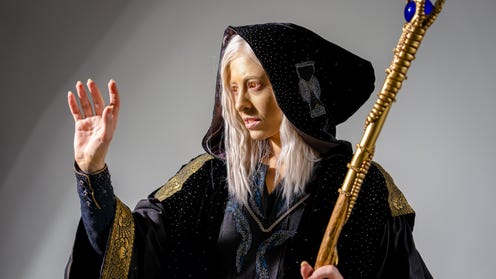
Find out more about what the judges saw behind the scenes to pick the winners in this incredible competition!
-
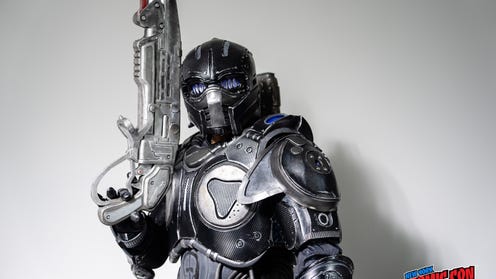
Inside the Gears of War armor cosplay winner from NYCC Crown Championships with Supadezz
Find out more about what the judges saw behind the scenes to pick the winners in this incredible competition!
-
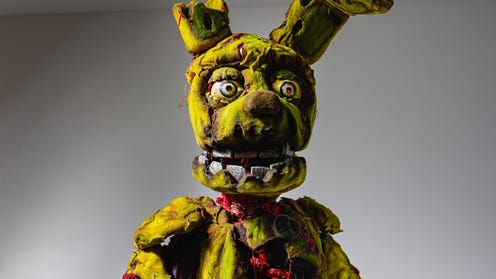
Find out more about what the judges saw behind the scenes to pick the winners in this incredible competition!
-
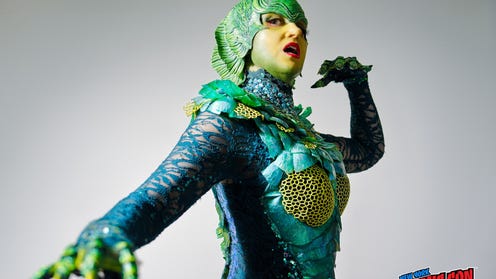
Meet Say No To Scrunchies, NYCC's Cosplay Central Crown Championships' third-place winner
Find out more about what the judges saw behind the scenes to pick the winners in this incredible competition!
-
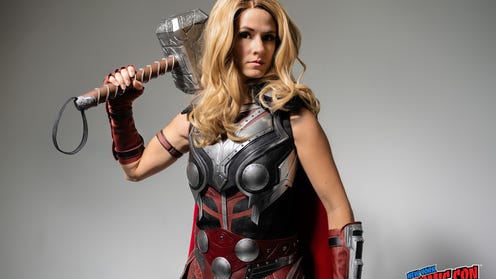
Meet Vee Cosplay, the NYCC 2023 Cosplay Central Crown Championships second-place winner
Find out more about what the judges saw behind the scenes to pick the winners in this incredible competition!
-
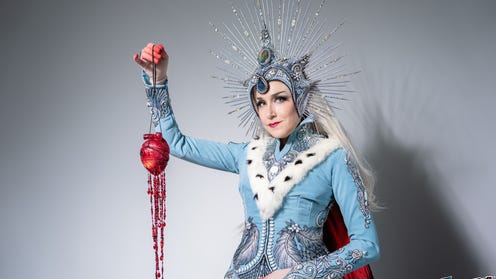
Meet Sarcasm-hime, Champion at NYCC's Cosplay Central Crown Championships
Find out more about what the judges saw behind the scenes to pick the winners in this incredible competition!
-
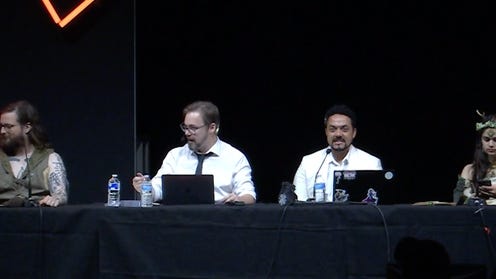
Members Access Dicebreaker brought some of the biggest names in the UK TTRPG community to MCM; you can watch it right here
Johnny Chiodini, Liv Kennedy, Jasper William Cartwright, Jess Jewel, Shamini Bundell, and Mark Sherlock Hulmes were all in attendance
-
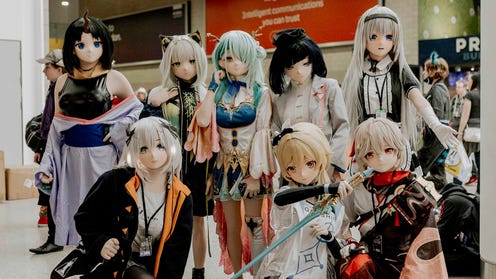
Over 100 of our favoritest cosplay from MCM Comic Con October 2023
Popverse becomes Pupverse with some dog cosplay (and human cosplay too).
-
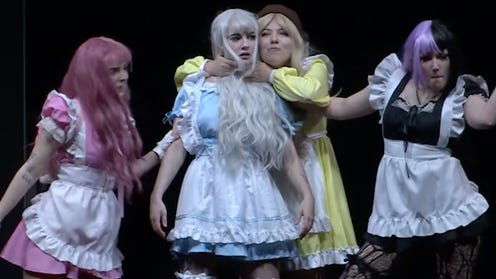
Watch the best-dressed guests of MCM rock Taylor Swift, Demi Lovato, and more. Hosted by Chazz Redhead and judged by the Belfast Queen herself, Blu Hydrangea
-
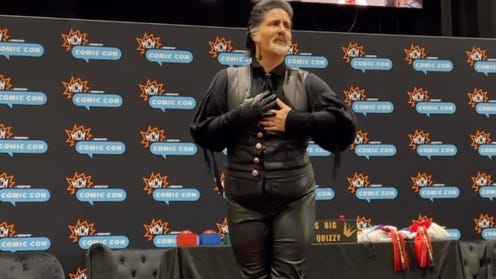
Members Access Watch Our Flag Means Death fans pub quiz with Izzy's Big Hard Quizzy at MCM
Captain Andi hosts Our Flag Means Quizzy, a special MCM-exclusive quiz show, right here
-
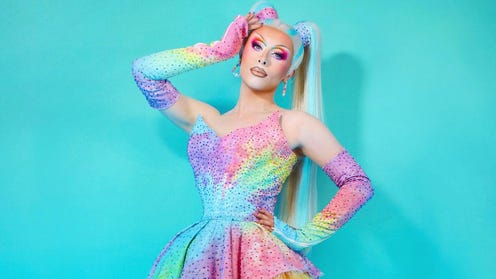
Members Access Watch Blu Hydrangea: Queen of the Mother-Tuckin' World from MCM in London
Hot off her victory on RuPaul's Drag Race: UK vs the World, Blu Hydrangea is in London for a one of a kind show. Don't miss out!
-
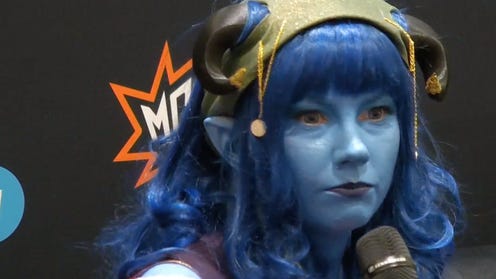
Members Access Want to roll the dice on your own fantasy adventure? Watch the Guide to D&D panel from MCM here
D&D pros Sophii (@SophiiRPG), Ophelia (@OpheliaDeckard), Kay (@kayPOWXD) and Tim (@ChaoticQuesters) take the London stage to help you get started
-
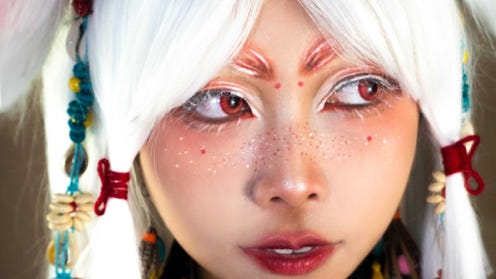
Contacts for cosplay: the five best online stores to buy contact lens for Halloween (or anytime!)
If you're looking for contact lenses for your next cosplay, here are the 5 best online stores to choose from.
-
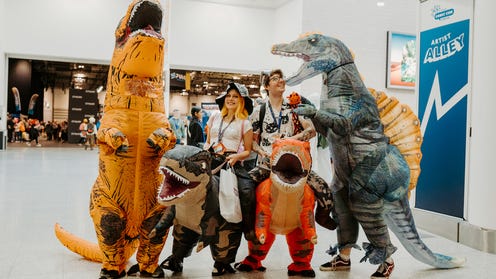
Trend alert: If you're a cosplayer, the answer appears to be dinosaurs
The real thing might be extinct, but T-Rexes are making a comeback at the London MCM Comic Con
-
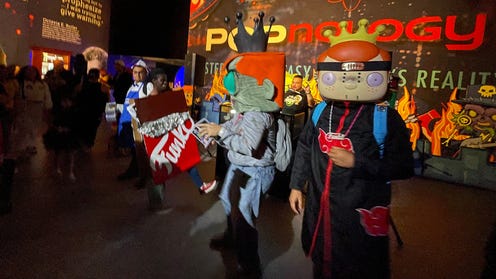
Funko’s Funmaker Mike Becker gets serious about giving back to the Comic-Con Museum
The third annual Mask-O-Raid presented by Funko helps raise money for its community
-

Popverse challenges all of London to a pub quiz at this weekend's MCM Comic Con
There may not be an actual pub involved, but the prizes are very real nonetheless
-
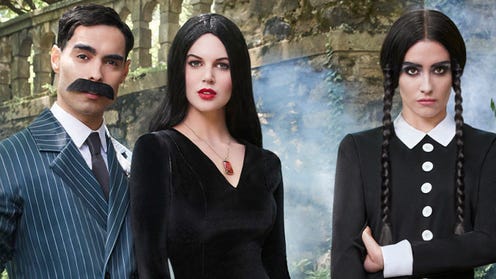
The top Halloween costumes for 2023 are less creepy, more IP
We've got a list of the most popular Halloween costumes this year, according Google Trends. What's your guess for #1?
-
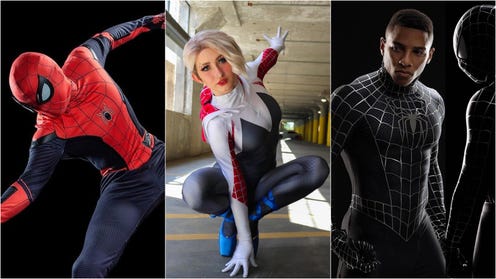
The best Spider-Man Halloween costumes on the... web
Whether you're bringing Peter Parker, Miles Morales, or Gwen Stacy trick or treating, we have a guide to the best Spider Man costumes
-
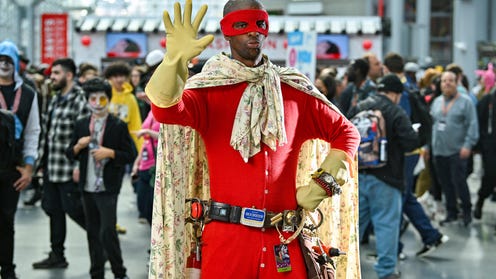
The most epic cosplay from New York Comic Con 2023!
Check out the coolest cosplay at NYCC
-
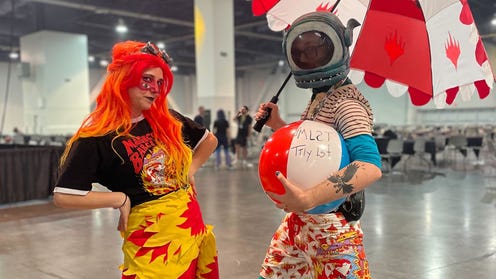
MagicCon Las Vegas 2023: The best cosplay from the Las Vegas Convention Center
Take a look at what's going on in Las Vegas Convention Center this weekend!
-
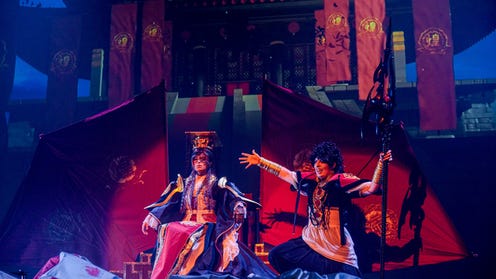
It takes a village: behind the Scenes at the World Cosplay Summit
Team UK took the stage by storm in Japan, UK organiser Emma shares her WCS diary for an inside look at the journey to become World Champions
-
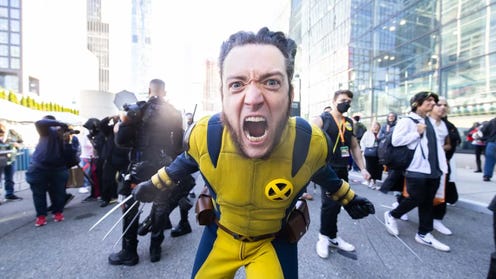
Watch now! NYCC 2023: Watch the Cosplay Central Costume Showcase
Cosplay Central was at New York Comic Con 2023 to showcase some of the most talented cosplayers in the business; watch it here. Presented by DoorDash.
-
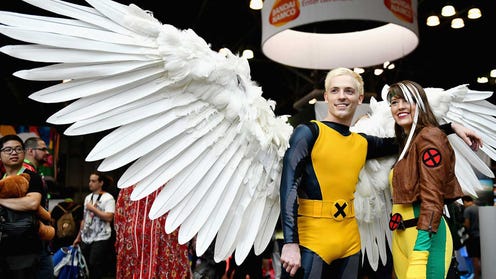
Watch now! Watch the NYCC '23 Cosplay Central Crown Championships here!
See the best of the best in NYCC 2023's Cosplay Central Crown Championships qualifier, presented by DoorDash.
-

Dragon Con's 2024 dates have been announced
Hope you didn't have any other plans for Labor Day 2024
-
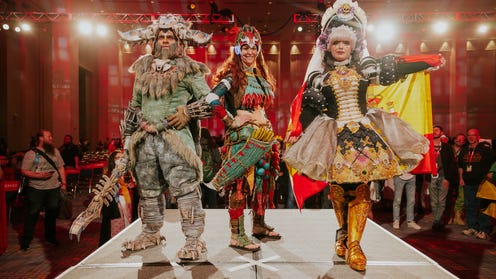
ReedPop's Cosplay Central Crown Championships Returns in 2024
Find out all you need to know about the 2024 competition circuit for ReedPop's global cosplay championship
-
.jpg?width=496&height=279&fit=crop&quality=80&format=jpg&auto=webp)
Barbie: The cosplayers who celebrate Mattel's iconic doll-turned-movie-star
These Barbie cosplayers know the doll's impeccable fashion choices!
-
.jpg?width=496&height=279&fit=crop&quality=80&format=jpg&auto=webp)
Encanto: 9 cosplay costumes from the Disney animated movie to enchant you
Disney's Encanto characters come to life as cosplayers make material magic
-
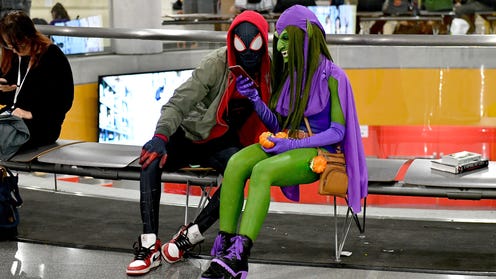
Support Popverse (and get more Popverse!) for only $5.99 a month
Support comics, movie, and TV reporting that sets the standard.
-
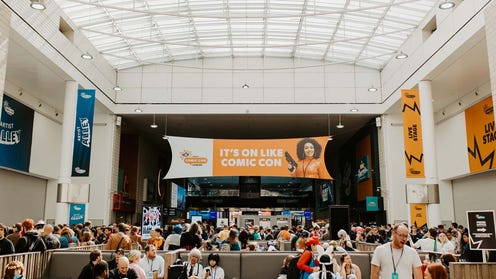
Our Flag Mean Death and the stars of Witcher, Star Trek: Strange New Worlds, and more are here at MCM Comic Con
-
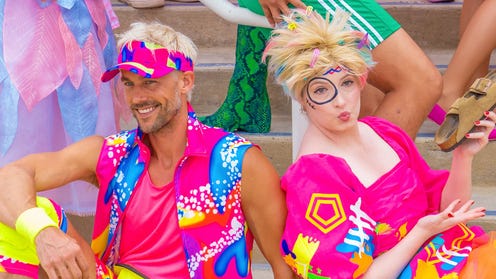
We found Barbie at San Diego Comic-Con 2023
SDCC just happened to be the same weekend Greta Gerwig's Barbie premiered, and fans were out in full force to show their love
-
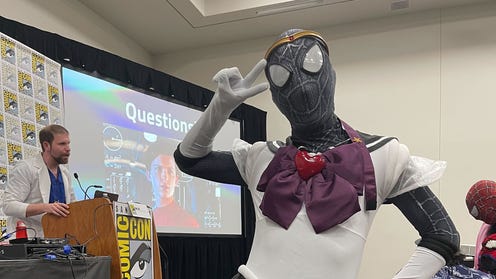
The most amazing cosplay from San Diego Comic Con 2023
All the best cosplay at Comic-Con International: San Diego
-
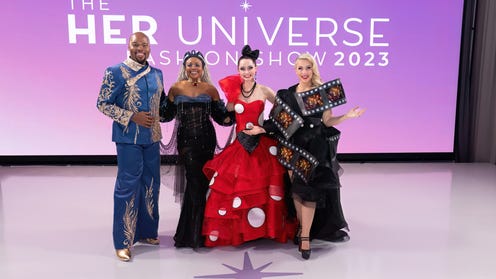
“We work so hard and when it happens it just is truly like a dream,” Eckstein says
-

Marvel celebrates the winner (and the losers) in third annual X-Men Vote with their own series
There's other comics about the winners, but this comic is about the losers. People voted for them too, right?
-
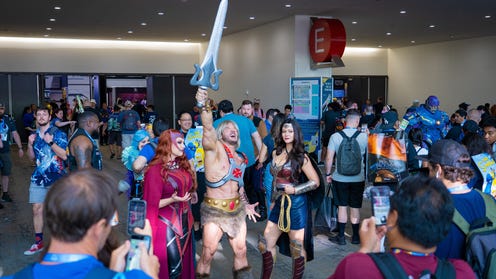
Get ready, the 2024 San Diego Comic-Con dates have been confirmed (and its a busy weekend)
What are you doing in late July 2024, anyway? We're doing Comic-Con International: San Diego
-
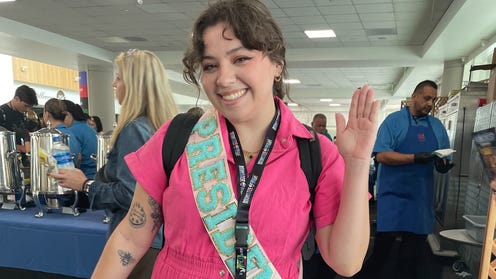
Barbie takes San Diego Comic-Con - through cosplay!
Popverse spotted several Barbies throughout the San Diego Convention Center
-

SDCC 2023: What to expect at San Diego Comic-Con this year
Everything you need to know about this year's San Diego Comic-Con
-
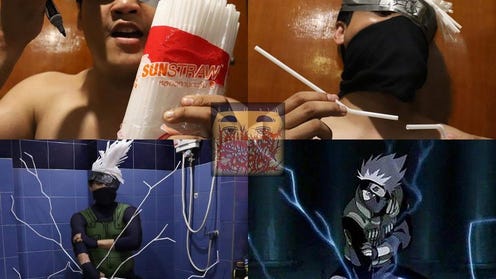
From Kakashi to Naruto himself, this guy makes cheap but effective cosplays.
-
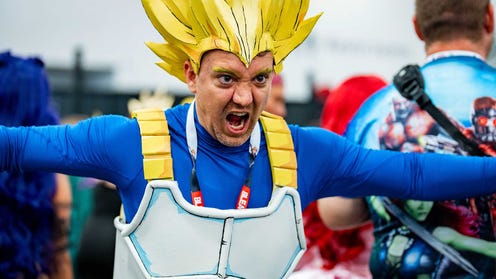
Our favorite cosplay from Florida Supercon in Miami Beach!
South Florida represents with some amazing cosplay at June 2023's Florida Supercon.
-
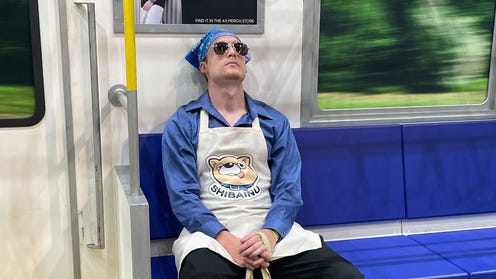
The most amazing cosplay from Anime Expo 2023 in LA!
AX in LA, as told through cosplay.
-
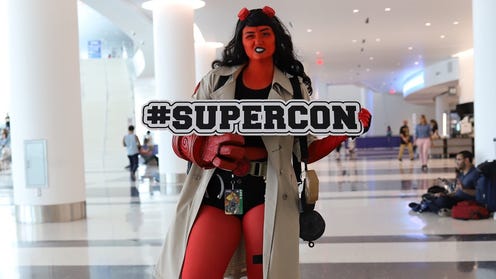
Miami! Get ready for the next Florida Supercon, as we have the 2024 FSC dates
Florida Supercon is heading back to Miami next July. Here are the deets.
-
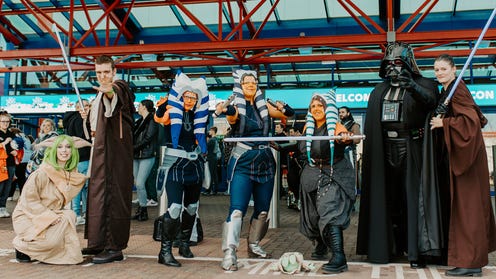
MCM Birmingham returns in winter 2023 - Here's the dates for the UK show!
MCM is returning to Birmingham, England this winter - but with later dates than you might expect.
-

Popverse: Year One - our most popular articles, as decided by YOU!
From controversy in comics to cartoons that make you say 'Woooo!', Popverse's first year was great. Here are the most popular news, panels, features, and guides from year one.
-
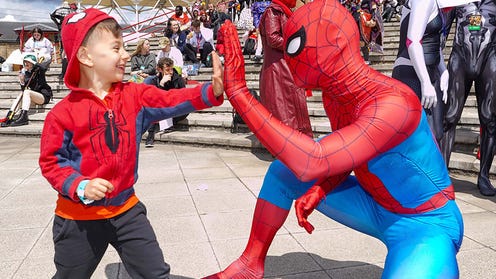
Our favorite cosplay from MCM Comic Con in May 2023!
London represents with some amazing cosplay at May 2023's MCM Comic Con
-
.jpg?width=496&height=279&fit=crop&quality=80&format=jpg&auto=webp)
Popverse: Year One - the big surprises, the big successes, and the big deals you should know about
It's the first birthday of our tour guide to pop culture, Popverse
-
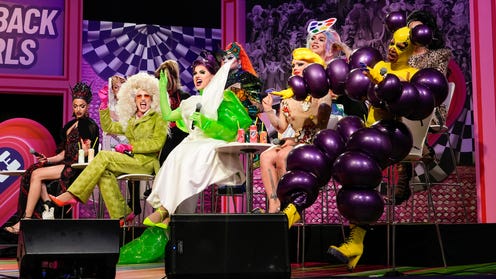
RuPaul's DragCon 2023: Catch the best looks
You only wish you could be so stylish
-
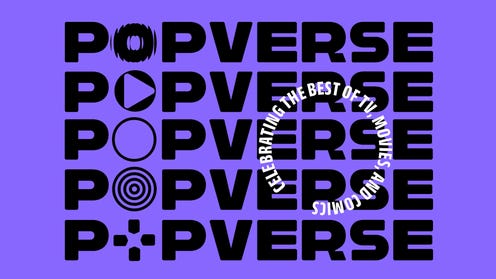
We've just made it easier for you to keep up with your favourite things
Spend less time searching for the things you love, and more time reading about them.
-
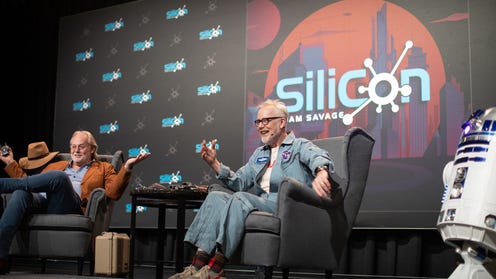
Bay Area comic convention SiliCon cancels this year's event due to "financial hardship"
Reports indicate one of SiliCon's major financial backers pulled out of this year's event
-
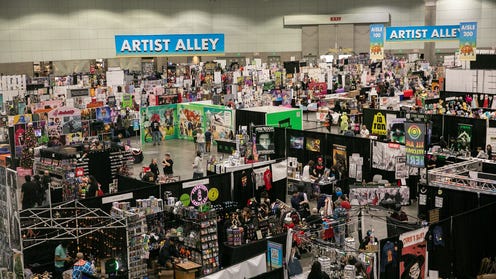
Los Angeles Comic Con boasts it beat all its area competitors to be the biggest in the LA area
Los Angeles Comic Con says it just bested others as the biggest LA-area comic convention around
-
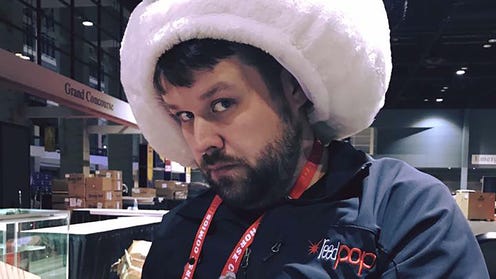
ReedPop VP (and Popverse co-founder) Mike Armstrong is exiting the company after nearly 14 years
After nearly 14 years, ReedPop's Mike Armstrong is leaving the company
-
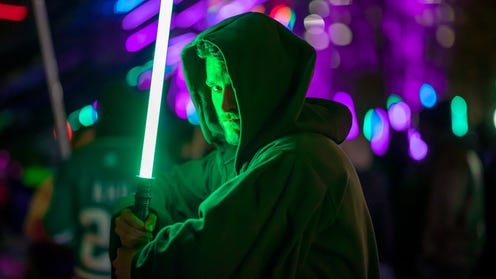
Cosplay Jedi from The High Republic to the Rebel Alliance to celebrate Star Wars Day
May the Fourth be with you!
-
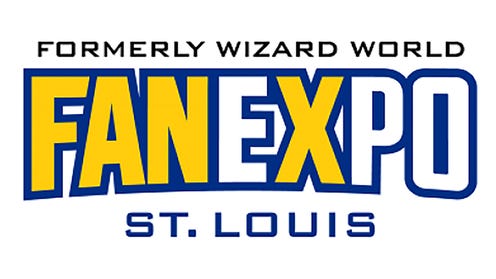
Fan Expo St. Louis quietly canceled after nine-year run
As Fan Expo St. Louis closes its doors, St. Louis loses its annual comic convention
-

Livestream! Watch the Cosplay Central Crown Championship from C2E2 '23
Cosplay Central's Crown Championships are at the Chicago Comic & Entertainment Expo 2023, and you can watch them here.
-

Comic con on a cruise ship? It's coming in 2024
Comic convention + cruise ship? Imagine it all, especially the cosplay with Comic Con Cruise
-
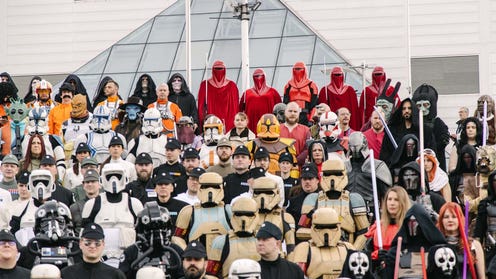
Star Wars Celebration 2023: The best cosplay from a galaxy far far away
Begun, the cosplay wars have
-
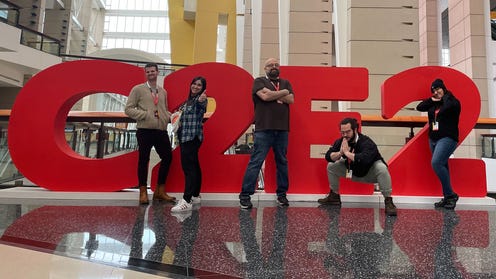
C2E2 2023: Watch most of the big panels on VOD, read the biggest news, and more thanks to Popverse
It's time to make our way to Chicago for one of our favorite comic conventions
-
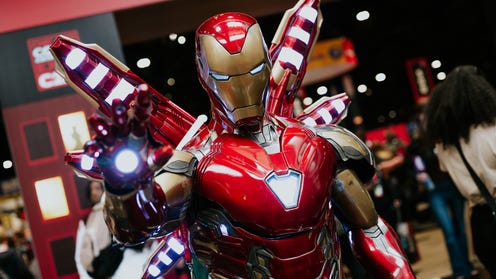
C2E2 2023: Enjoy the wonders of the show's best cosplay
Check out a gallery of C2E2's best cosplay photos!
-
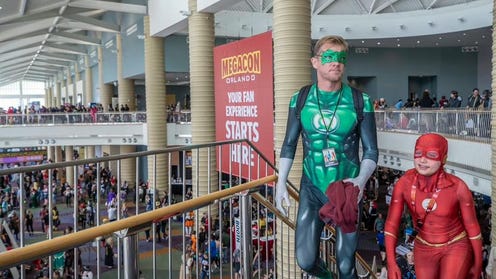
Orlando's MegaCon moves to earlier dates in 2024
The biggest fan event in the Southern US will take place much earlier than year
-
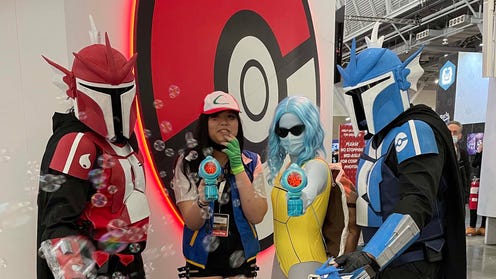
Popverse visited PAX East 2023, and came back with some amazing cosplay photos!
-
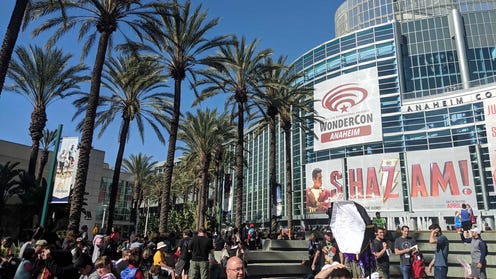
WonderCon 2024 dates are announced (and its slightly later next year)
The LA area's big comic convention, WonderCon, is returning in 2024
-
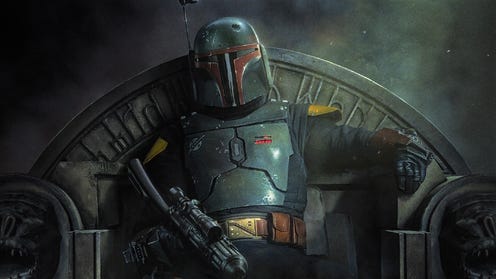
Star Wars: How to cosplay as Boba Fett, from the helmet to the armor
We've compiled a list of must-haves to create a Boba Fett cosplay based on his new Mandalorian look.
-
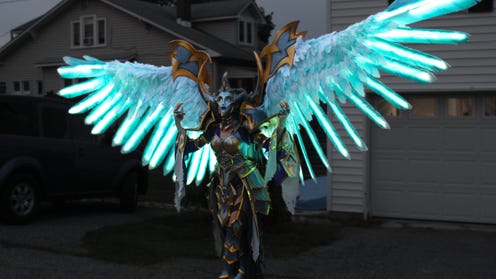
Foam for Cosplay: How to begin Foamsmithing for your next cosplay armor
Having trouble figuring out which foam to use for your next cosplay? Look no further!
-
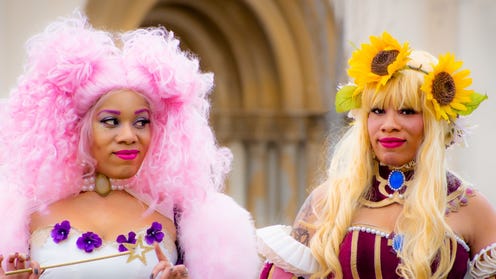
Cosplay Wig guide: Tips and tricks to get the best cosplay wigs if you're a cosplayer or crafter
Whether you are new to wig styling, have a love-hate relationship with wigs, or are a pro wig styler, this article is for you.
-
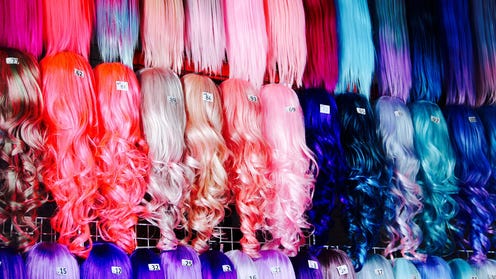
Cosplay wigs: the 10 best wig stores and commissioners to get your next costume hair
If you're looking for a new wig, check out these stores.
-
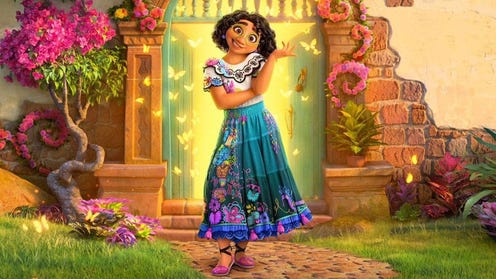
Encanto: How to cosplay as Mirabel, Isabela, Luisa, and Camilo from the hit Disney movie
Disney's newest movie Encanto has some stunning character designs and we have some tips to cosplaying them!
-
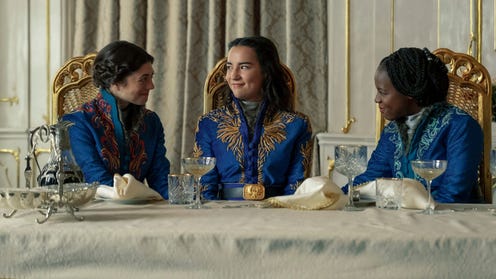
Shadow and Bone: How to make your own Kefta uniform and join the Grishaverse
Create your own Grishaverse cosplay using this Kefta tutorial!
-
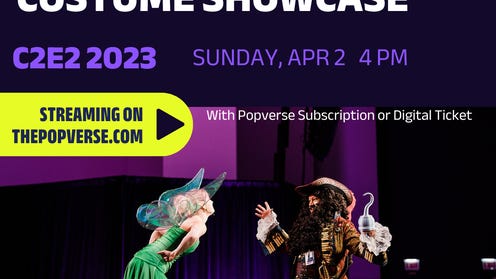
Members Access Livestream the Cosplay Central Costume Showcase panel from C2E2 '23
The best cosplayers in the game take the stage for the Cosplay Central Showcase at C2E2 2023, and you can livestream it here.
-
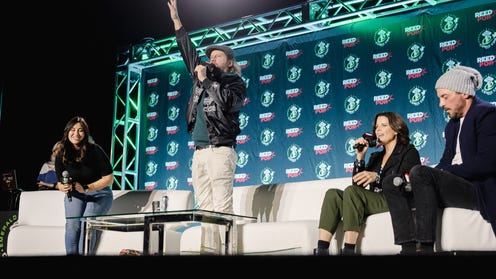
Emerald City Comic Con: All the greatest coverage from Popverse at the first big convention of 2023!
Springtime in Seattle, and Popverse is back on the convention circuit with the 20th annual Emerald City Comic Con
-
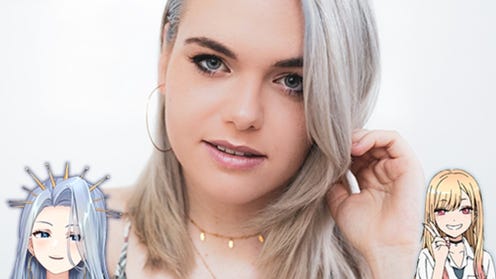
Full Panel Video Watch the Amalee Spotlight panel from ECCC '23
YouTube star Amalee takes the Pine Stage at Emerald City Comic Con 2023, and you can watch it here.
-
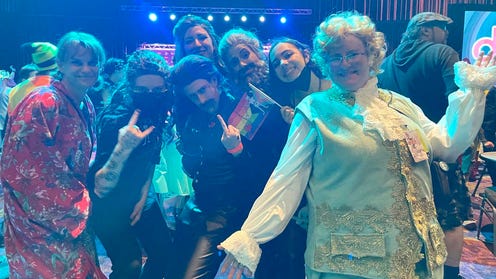
Krakens, cakes, and crews: Unique Our Flag Means Death cosplays from Emerald City Comic Con
The most deep cut costumes at the Our Flag Means Death panel

